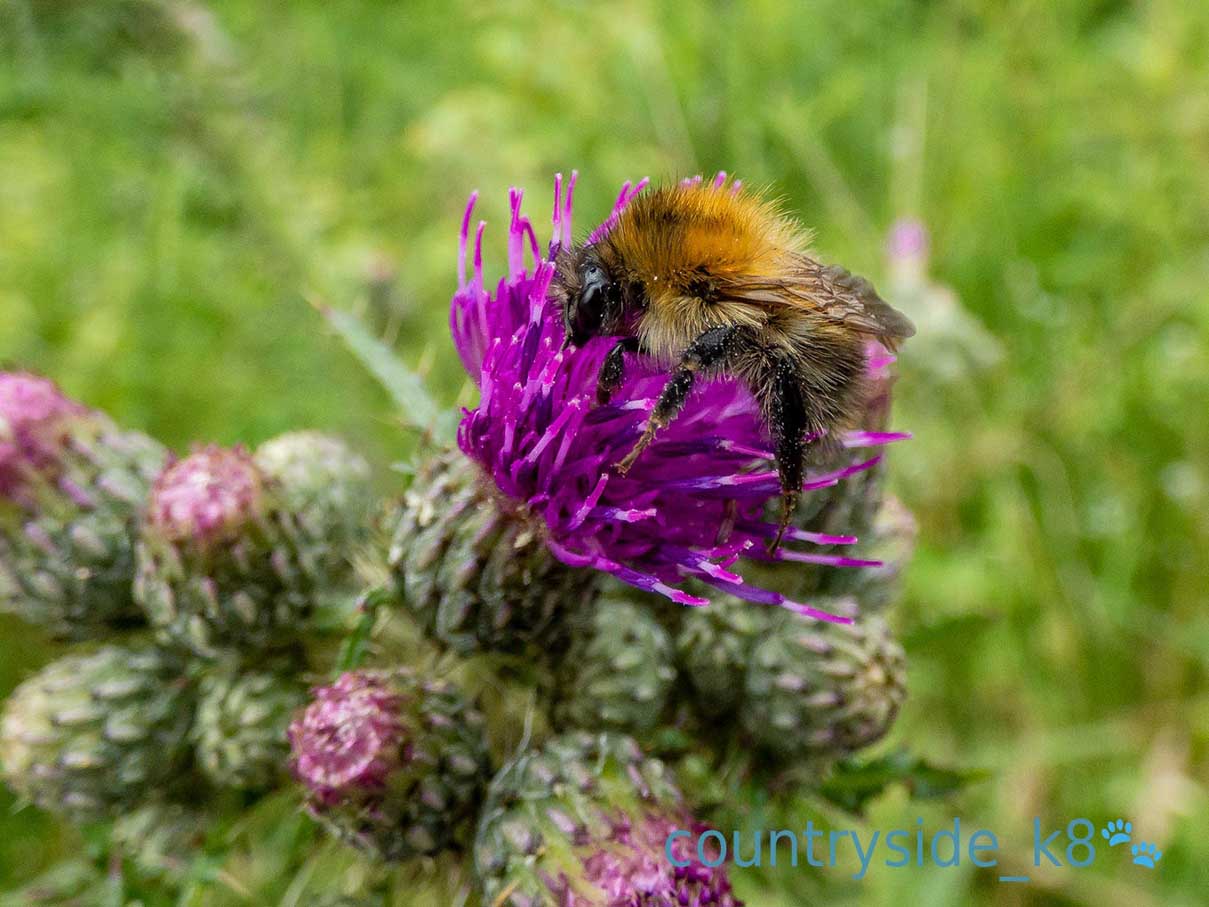
Common Carder Bee
Common Carder Bee
Latin name: Bombus pascuorum
The Common Carder Bee is a fluffy, gingery-brown bumble bee. Males, workers and queens are all similar in appearance. Females usually have creamy-white sides to the thorax. Males often have yellow sides to the thorax and more obvious facial hair tufts. Males can be distinguished from females by their longer antennae.
The Common Carder Bee is the earliest of the Carder Bees to emerge in spring and can be seen feeding on flowers anywhere there are flowers to feed on including gardens, hedgerows and heaths. They are ‘long-tongued bees’ and feed on flowers with long tubular florets, such as heather and clover. They can be seen on flowers right the way through to October or November.
It nests in cavities like old birds nests, in old mouse runs, grassy tussocks, or moss mats in lawns. Nests can contain up to 200 workers. The queen emerges from hibernation in March and starts a colony by laying a few eggs that will hatch into workers. Males emerge a little later and will then mate with new females who are potential queens. Both the old queen and all the males will die in the autumn, leaving the new queens to hibernate over winter ready to establish new nests in the spring.
Carder Bees get their name from their habit of combing material together, known as ‘carding’ to create a cover for the cells that contain the larvae.
Common and widespread in Britain.
Created: 5 October 2018 Edited: 6 October 2018
Nantile Ridge - Cloud Inversion

Brett Gregory is an award-winning filmmaker based in Bolton whose production company, Serious Feather, is currently making a documentary about autism and poetry.
As a part of this production, Landscape Britain was asked to advise with regards to the location of specific areas of outstanding natural beauty throughout the region.
Visit www.seriousfeather.com for further information.

Own label and private label building products
We produce, brand and supply for some of the biggest names in the industry. Read more...


